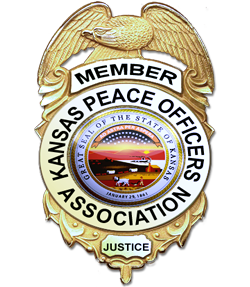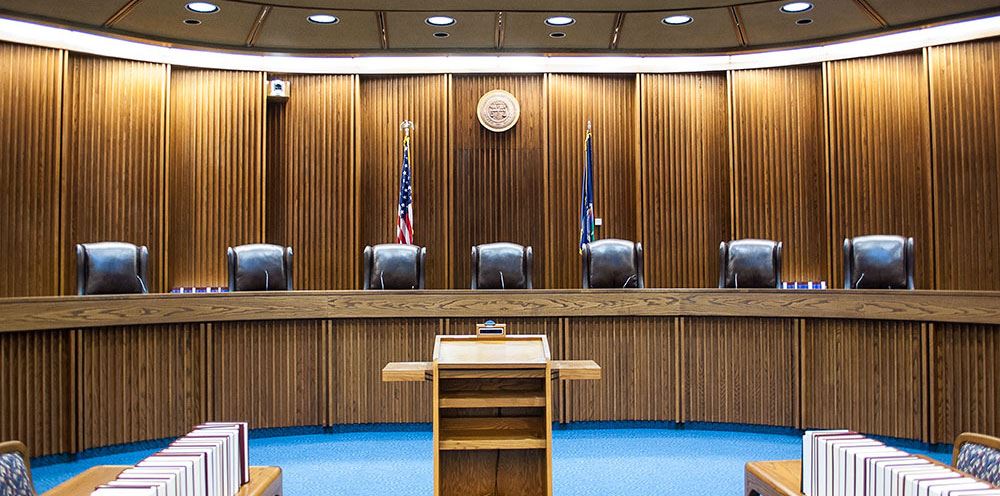I do not usually report on state trial court opinions because those tend to affect only the parties in a particular case. However, the following lower court decision has a couple of teaching points that may well be useful to other officers who might find themselves in similar circumstances.
In 2022, a Kansas sheriff deputy was dispatched to a rural property on the anonymous tip of there being neglected and abused dogs. Deputies had been to the private residence before and knew it to be the location of a home and a dog breeding business. The deputy parked in the driveway, went onto the front porch and knocked on the door. No response. Believing that K.S.A. 21-6412(e) [the animal cruelty statute] gave him authority to check the welfare of animals on the property, the deputy walked to the backyard. About 75 yards from the house, the deputy found many abused dogs in multiple pens. While the deputy was at the pens, the breeder and his spouse arrived. The spouse attempted to remove one of the injured dogs. Believing that the owners were going to remove the dogs from the property, the deputy warrantlessly seized three of the most- injured dogs. Other deputies arrived, secured the property, obtained a search warrant, and sought the assistance of the state Department of Agriculture’s Division of Animal Health to help seize and care for an additional 55 dogs. The search warrant was based upon what the first deputy had observed after entering the breeder’s property.
The breeder was charged with multiple counts of animal cruelty and moved to suppress the evidence arguing that the first-dispatched deputy did not have authority to enter and search the property. There was extensive briefing by the parties and the trial court held a hearing during which multiple witnesses testified. In his well-reasoned written opinion, the trial judge answered three questions concerning the legality of the first deputy’s actions.
The State had first argued that based upon the anonymous 911 call (information that animals were then being abused and neglected) and the later possibility that the dogs would be removed from the property before a search warrant could be obtained, the deputy had both probable cause and exigent circumstances to enter and search the property. The Court disagreed.
While an anonymous tip can be used to demonstrate probable cause, more is required than just the tip itself. Tips from unidentified informants must be corroborated, accompanied by a description of the informant’s basis of knowledge, or have some indicia of reliability. Based on the evidence presented at the hearing, the trial judge held that the tipster’s basis of knowledge and reliability were completely unknown to the deputy. Additionally, the presence of abused dogs, and of them possibly being removed before a search warrant could be obtained, was known only after the deputy’s initial entry and search. So, neither probable cause nor exigent circumstances were present at the moment the first deputy entered the property.
The State next argued that K.S.A. 21-6412(e) authorized the deputy to search the property for evidence of animal cruelty. The applicable part of that statute states that, “[a]ny . . . law enforcement officer . . . may take into custody any animal, upon either private or public property, which clearly shows evidence of cruelty to animals . . .” Again, the judge disagreed. While that statute does allow for the seizure of abused animals, it says nothing about officers’ trespassing and searching to find the animals. In other words, the deputy first had to have the right to be where the deputy could observe the dogs before the statute would then authorize a seizure. So, the first deputy had no statutory authority to enter onto or to search the defendant’s property.
Lastly, the State argued that the dog pens were located outside of the curtilage of the breeder’s home and therefore the open fields doctrine should apply. The curtilage of a home is the area immediately surrounding, and directly associated with, the home. The curtilage area “harbors the intimate activity associated with the sanctity of a person’s home and privacies of life.”
“Open fields” was first recognized by the United States Supreme Court in 1924. The Big Court has said since that contrasted with those areas that a person does have a reasonable expectation of privacy, open fields “do not provide the setting for those intimate activities that the [Fourth] Amendment is intended to shelter from government interference or surveillance. There is no societal interest in protecting the privacy of those activities, such as the cultivation of crops, that occur in open fields.”
As a practical matter, open fields are those areas accessible to the public (and therefore open to the police too) in ways that a home, an office, or commercial structure would not be. Fences and “no trespassing” signs also do not bar the public from viewing those areas. Further, an open field need not be either “open” nor a “field” as those terms are used in common speech. Therefore, “an individual has no legitimate expectation that open fields will remain free from warrantless intrusion by government officers.”
The factors to be considered by a court when determining whether a particular location is an unprotected “open field” include: 1) the proximity of the area claimed to be curtilage to the home; 2) whether the area is included within an enclosure surrounding the home; 3) the nature of the uses to which the area is put; and 4) the steps taken by the resident to protect the area from observation by people passing by. After reviewing those factors, the trial judge held that the significant distance between the home and the dog pens, the commercial breeding operations carried on at the pens, and the lack of any curtilage-type activity near the pens all weighed in favor of the area having been an open field. Therefore, the first deputy’s entry and subsequent search of the pens was lawful. The defendant’s motion to suppress the evidence was denied.
Additional Note: Whether because the defendant was a licensed dog breeder his property was also subject to administrative inspection pursuant to K.S.A. 47-1709 was not discussed in opinion. A review of that statute, and the supporting Kansas Administrative Rule 9-18-8, indicates that the Animal Health Commissioner of the Kansas Department of Agriculture or “the commissioner’s authorized, trained representative” may administratively inspect premises without notice between 7AM and 7PM Monday through Friday. That said, even a KDOA-sanctioned inspection is subject to the Fourth Amendment. Should an administrative inspection be refused, the inspector will be required to obtain an administrative search warrant from the district court to be able to return and proceed with the property inspection. Remember that state law can never override the requirements of the Fourth Amendment. “When it comes to the Fourth Amendment, the home is first among equals.”
Additional reading see: K.S.A. 21-6412(e); K.S.A. 47-1701 et seq.; (on tipsters): Illinois v. Gates, 462 U.S. 213, 241-46 (1983) and State v. Hensley, 298 Kan. 422, 431 (2013); (on open fields): Oliver v. United States, 466 U.S. 170 (1984), United States v. Dunn, 480 U.S. 294, 304-05 (1987), and State v. Tinsley, 16 Kan.App.2d 287 (1991); (that officers can go where the public and invitees go): Florida v. Jardines, 569 U.S. 1 (2013).


